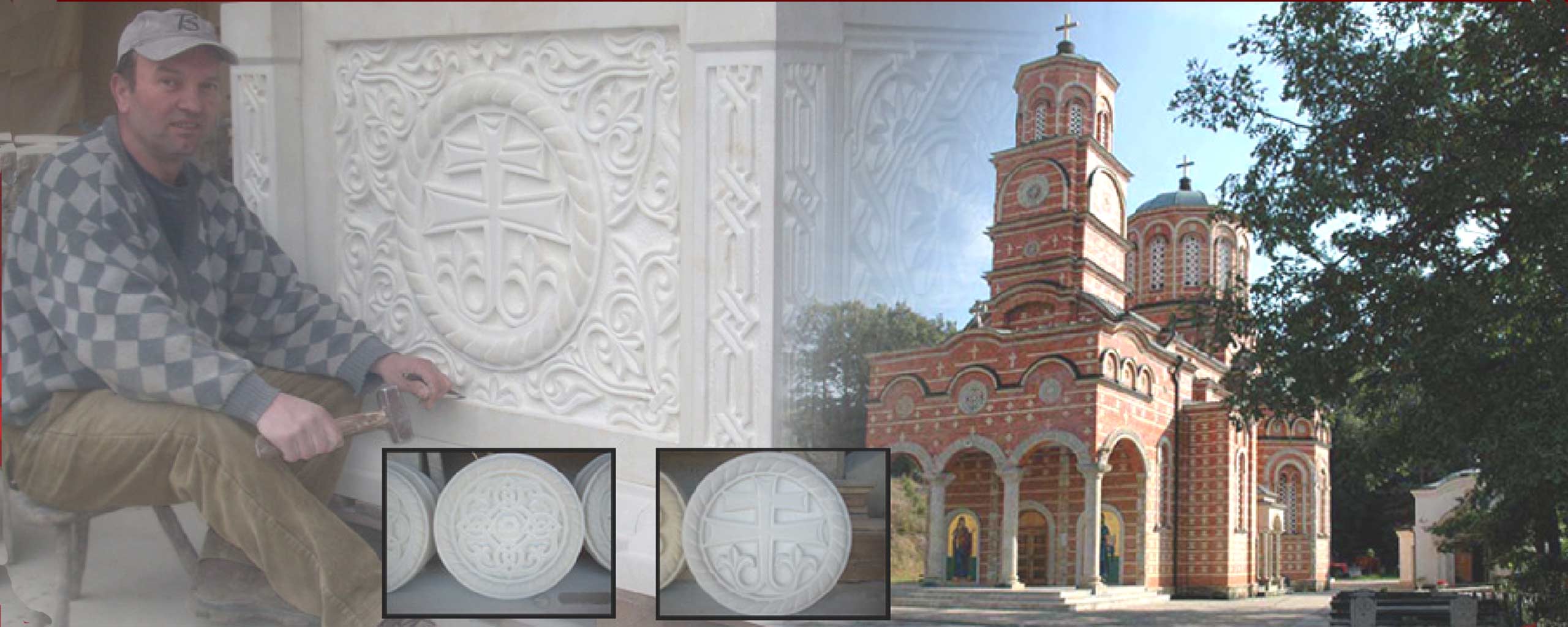The stone brought up generations of stonecarvers from Bela Voda. It became and remains the symbol of human persistence and skills. The stone is a symbol of strength and endurance of man from Bela Voda in the struggle for life and desire to survive. The wish to give the shapes to stone that it carves, is as old as man. Our distant ancestors in the stone they carved feeders and drinkers for cattle, dug sarcophagi, tombstones… Advancing technology and tooling, perfecting of stone masonry is develop the trade. Today’s technological advances allow for stone cutting by person’s wish. Without sentimental approach to stone, without listening how stone rings without following its veins-wires there is no real stone carving. The tradition of stone processing in Bela Voda is preserved by transferring knowledge from father to son.
Aesthetic beauty of sandstone from Bela Voda was recognized as the decorative stone sculptures from Moravian school: rosettes, portals, arches, cornices, window frames with vegetable, zoomorph and geometric motives. Stone has different variants of white, yellow and red. Its features, such as resistance, good workability, colors, have made it popular decorative and architectural-construction stone.
In Belgrade, there are buildings erected using this stone, such as the church of St. Mark, the Palace “Beograd”, Agricultural Bank (now the Museum of the Revolution), Mortgage bank, the Adriatic-Danube bank (Jugobanka today), French Cultural Centre, King Alexander Bridge (today Branko’s Bridge), a monument to the fallen in the First World War …
Ljubisav Smiljković, Živan-Žića and Milutin Milenković using their chisels carved iconostasis in churches and monasteries: on the Ozren in Moštanica, Šipovo, Glamoč, Jezero near Jajce, Palačkovci near Banja Luka, Donji Karin near Šibenik, Jasenovac, Stublo near Kraljevo, Petrijevo near Smederevo, Bela Voda, Djunis near Krusevac, Hopovo, Grgeteg on Fruška gora, Preradovac near Oparić … With their carvings they built and decorated the churches in Glamoč, Osijek, Knin, Krnjevo, Riljac, Lučina, Velika Drenova … in Yugoslavia, Birmingham in England…

